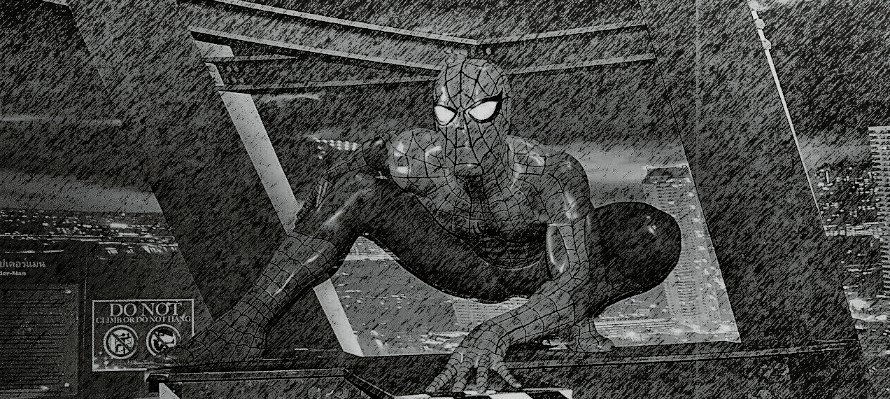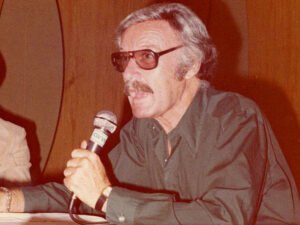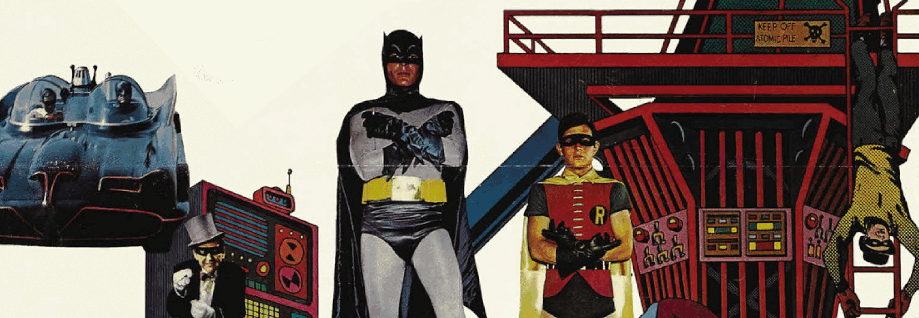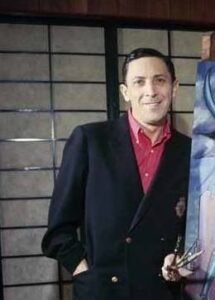
These stories represent my first professional work as a journalist. I arrived in New York City in November 1976 at age 26, hungry for an opportunity to write full-time after spending six years practicing my craft at college and community newspapers in New England. I had just started to sell a few stories in Maine, but realized I would have to move to a big city if I was serious about switching careers from social worker to journalist. Full of hope, I quit my job in rural Maine as a senior citizens’ aide, drove to New York, sold my car, moved into an Upper West Side apartment with two aspiring opera singers, and began to look for work.
Stan Lee (1922-2018), Creator of Spiderman and the Incredible Hulk

With the current rage over Superman due to last year’s hit movie, many people will purchase a copy of the comic for the first time in years, and may be disappointed to see how much it has changed. Once the largest selling comic book hero on the market, Superman was knocked out of first place long ago by Spiderman, the creation of a 56-year-old native New Yorker named Stan Lee. Besides selling about one million Marvel comics each month, Spiderman appears as a daily strip in some 500 newspapers around the world.
But even without this giant success, Stan Lee would be rich and famous. His fertile mind has also given birth to the Incredible Hulk, the Fantastic Four, Captain America, Doctor Strange, and a host of other modern-day mythological figures. As publisher of Marvel Comics, he rules over an empire that branches out into dozens of areas — prime-time television drama, animated cartoons, hardbound and paperback collections of comic reprints, novels about Marvel characters, toys, games, posters, clothing and much more. Most of these spin-off products are the work of other companies that have bought the rights, but Stan Lee remains the creative force behind the whole operation, as I discover during a meeting with Lee at the Marvel headquarters on Madison Avenue.
“I think the title of publisher is just given to me so I can have more prestige when I’m dealing with people,” says Lee in his clipped, precise voice, as he stretches his feet onto the coffee table of his brightly decorated office. “I’m a salaried employee of Marvel — your average humble little guy trying to stay afloat in the stormy sea of culture. The company owns the properties, of course, but I have no complaints. I don’t think I could have as much anywhere else. … My main interest is to see that the company itself does well and makes as much money as possible.”
He is an intense, energetic man of wiry build who dresses in a casual yet elegant manner. As he shifts the position of his arms and legs on the couch, there is something unmistakably spiderlike in the movements. For all his politeness, he cannot mask the impression that his mind is racing far ahead of his rapidly spoken words.
“My involvement with this company goes back to about 1939,” says Lee. “I was always the editor, the art director, the head writer, and the creative director [from the age of 17]. In the early 1960s I was thinking of quitting. I thought I wasn’t really getting anywhere. My wife said, ‘Why not give it one last fling and do the kind of stories you want to do?’ So I started bringing out the offbeat heroes. I never dreamt that they would catch on the way they did.”
He emphasizes that he did not create the characters alone, but co-created them with the help of an artist. Nevertheless, it was Lee who revolutionized the comic book industry by introducing the concept of what has been termed the “hung-up hero” — the superhero whose powers do not preclude him from having the same emotional troubles as the average mortal. This is what makes Lee’s characters so believable and so irresistibly entertaining on television. It explains why CBS’ The Incredible Hulk is a hit, and why the same network has filmed eight episodes of The Amazing Spiderman. On January 19 from 8 to 10 p.m., CBS will broadcast the pilot for a new Marvel-based series, Captain America.
“Dr. Strange may come back again,” says Lee. “It was made into a two hour television movie.” His old Spiderman cartoons, too, are still in syndication.
He claims to work “about 28 hours a day,” and a look at his dizzying list of activities supports this claim. Besides running the Marvel headquarters, Lee makes frequent trips to the West Coast to develop shows for ABC and CBS, writes some cartoons for NBC, acts as consultant to the Spiderman and Hulk programs, writes an introduction to each of the dozens of Marvel books published each year, writes occasional books and screenplays of his own, gives lectures all over the country, and — what to some would be a full-time job in itself — writes the plot and dialogue not only for the Spiderman newspaper strip, but also, since November, for a Hulk newspaper strip that already appears in more than 200 daily papers worldwide.
Few people know Manhattan as well as Stan Lee. Born the son of a dress cutter in Washington Heights, he has made the Upper East Side his home for the past 15 years. “I’m a big walker,” he explains. “I’m a fast walker: I can easily average a block a minute. So if I want to walk to Greenwich Village, I give myself an hour — 60 blocks. I wouldn’t know what time to leave if I took a cab.”
Asked about new projects in the works, Lee mentions that Marvel is planning to produce some motion pictures that will be filmed in Japan. “And I have a contract to write my autobiography,” he adds. “I was surprised and delighted that they gave me five years to do it. So I presume I’ll wait four years; maybe in that period, something interesting will happen to me.”

Bob Kane (1915-1998), Creator of Batman
At the 1939 World’s Fair in New York, a time capsule was filled with memorabilia thought to be representative of 20th-century American culture, and scheduled to be opened by historians 5,000 years later. Among the objects chosen was a comic magazine that had appeared for the first time that year, the creation of an 18-year-old artist and writer named Bob Kane. Whoever chose the contents of the time capsule must have been prophetic, because today, 40 years later, few characters in American fantasy or fiction are so well known as Kane’s pulp hero — Batman.

“It was a big success from the very beginning,” says the cartoonist, a tall, wiry, powerful-looking man of 58 whose tanned, leathery features bear a striking resemblance to those of Bruce Wayne, Batman’s secret identity. “Superman started in 1938, and the same company, D.C. Comics, was looking for another superhero. I happened to be in the right place at the right time.
“The first year, Batman was more evil, more sinister. My concept was for him to scare the hell out of the denizens of the underworld. And then the second year, I introduced Robin, because I realized he would appeal to the children’s audience. That’s when the strip really took hold.”
The walls of his Eastside apartment are covered with vintage hand-drawn panels by America’s most famous cartoonists, and Kane, with his casual attire, his broad New York accent, and his habit of twirling his glasses around while slumped far down in his easy chair, would not seem out of place as a character in Maggie and Jiggs. Yet he likes to consider himself a serious artist, and has, in fact, had some notable achievements in his “second career,” which began in 1966 when he resigned from D.C. Comics, on the heels of the successful Batman TV series.
“I got tired of working over the drawing board after 30 years. I wanted to be an entrepreneur — painter, screenplay writer, and producer.” Since that time, he has built up a large body of work — oil paintings, watercolors, pen and ink sketches and lithographs, most of them depicting characters from Batman. They have been purchased by leading universities, famous private collectors, and New York’s Museum of Modern Art.
As a writer, Kane has created four animated cartoon series for television, has penned a screenplay for Paramount Pictures, The Silent Gun, has written an autobiography titled Batman and Me (due to be published next year), and has completed a screenplay for a full-length Batman movie. Recently, he has also emerged as an active participant in charitable causes, such as UNICEF, Cerebral Palsy and the American Cancer Society.
From March 16 to April 8, the Circle Gallery at 435 West Broadway in SoHo will exhibit a one-man show of about 40 Kane originals. Says Kane with his typical immodesty: “I’m probably the first cartoonist to make the transition to fine art. When you do hand-signed, limited editions of lithographs, you are definitely entering the world of Lautrec and Picasso and Chagall.”
Kane has lived on the East Side for the past 15 years and has no plans to leave. Asked about his early years, he tells of growing up poor in the Bronx. “I used to draw on all the sidewalks, and black out the teeth of the girls on the subway posters. I used to copy all the comics as a kid, too. That was my school of learning. … My greatest influence in creating Batman was a sketch by Leonardo da Vinci of a flying machine, which I saw when I was 13 years old. It showed a man on a sled with huge bat wings attached to it. To me, it looked like a bat man. And that same year, I saw a movie called The Mark of Zorro, with Douglas Fairbanks Senior. Zorro fought for the downtrodden and he had a cave in the mountainside, and wore a mask, which gave me the idea for Batman’s dual identity and the Batmobile.”
As might be expected, Kane takes much pride in his lifelong success. “Batman has influenced four decades of children,” he declares. “It has influenced the language. … It has influenced people’s lives whereby it gives them a sense of hope that the good guy usually wins in the end. And mainly, the influence has been one of sheer entertainment. I feel that most people would like to be a Batman-type superhero, to take them out of their dull, mundane routine of everyday living. … My greatest thrill comes from my 5-year-old grandson. Little did I know when I was 18 that one day I would see my grandson wearing a little Batman costume, driving around in a miniature Batmobile and yelling ‘Batman!'”

by Max Millard, from his Gutenberg ebook
